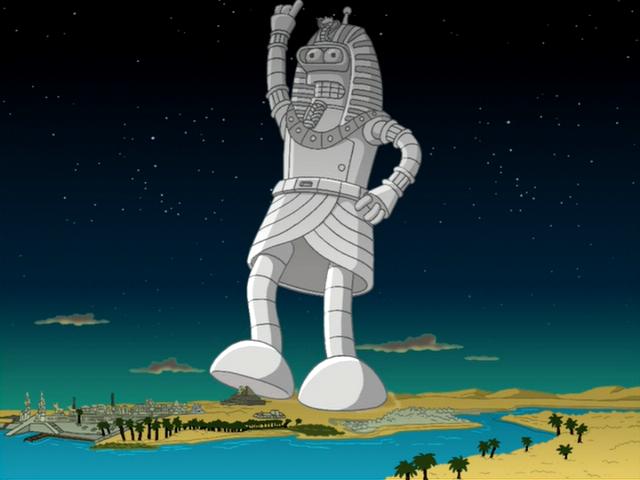TheOfficeMut
Unconfirmed Member
Here’s how President-elect Trump could unify a bitterly divided America, provide well-paying jobs to many of the millions of disaffected workers who voted for him, and lift the economy, stock market and tax rolls.
All he needs to do is what he presumably does best: build something.
And I don’t mean a few miles of asphalt or a paint job on a rusting bridge.
Build something awe-inspiring. Something Americans can be proud of. Something that will repay the investment many times over for generations to come.
Build the modern-day equivalent of the Golden Gate Bridge, the Hoover Dam, the Lincoln Tunnel or the Timberline Lodge. Or even, given Mr. Trump’s passion for the sport, another Bethpage State Park Black Course — the first public golf course to host the prestigious United States Open.
Continue reading the main story
All of these are Depression-era New Deal public works projects started under President Franklin D. Roosevelt that are still in use.
Can anyone name even one infrastructure project from President Obama’s $800 billion American Recovery and Reinvestment Act? I didn’t think so.
In fairness to Mr. Obama, Republicans in Congress bitterly opposed his public works spending plans, and he lamented there were too few “shovel ready” projects.
That didn’t stop F.D.R. His Public Works Administration and Works Progress Administration, using combinations of public and private money, solicited proposals from states and cities, hired millions of workers and eventually built 78,000 bridges, 650,000 miles of roads, 700 miles of airport runways, 13,000 playgrounds and 125,000 military and civilian buildings, including more than 40,000 schools — in most cases to high standards of quality and design.
Photo
The Golden Gate Bridge under construction. The bridge was completed in 1937, in the Great Depression, during the presidency of Franklin D. Roosevelt. Credit Hulton Archive/Getty Images
The federal government built the La Guardia, Ronald Reagan Washington National and Los Angeles International airports, the Upper Mississippi locks and dams, the Bonneville power project on the Columbia River, the Robert F. Kennedy Bridge in New York, and the Florida Keys Overseas Highway. Most are still in use today. To a large degree, this is the infrastructure that made America great, to borrow Mr. Trump’s catchphrase.
...
“Our airports are like from a third-world country,” Mr. Trump said at Hofstra University during the first presidential debate. “You land at La Guardia, you land at Kennedy, you land at LAX, you land at Newark, and you come in from Dubai and Qatar and you see these incredible — you come in from China, you see these incredible airports, and you land — we’ve become a third-world country.”
Who could disagree? Hillary Clinton also called for a big increase in infrastructure spending.
“The single best thing the federal government can do to promote economic growth is to repair and build the transportation network, the highways, railroads and airports,” said Roger Noll, an emeritus professor of economics at Stanford and a senior fellow at the Stanford Institute for Economic Policy Research. “It’s been neglected for 30 years.”
...
For a sense of what might be possible, I asked Mr. McNichol to pretend he had just been tapped as Mr. Trump’s new infrastructure czar and to come up with a list of his top 10 infrastructure projects, balanced between red and blue states. Most are shovel-ready, or close to it. Here’s what he suggested, along with estimated costs:
■ Hudson River rail tunnel: The Northeast Corridor desperately needs another rail link connecting Manhattan and northern New Jersey. The current overcrowded tunnel is over 100 years old and was severely damaged by Hurricane Sandy. Cost: $23.9 billion.
■ California high-speed rail: America’s first modern high-speed rail project would connect San Francisco and Los Angeles, about 400 miles apart, in under three hours. Cost: $65 billion.
■ The Gordie Howe International Bridge: A rebounding Detroit needs another link to Canada. The privately owned Ambassador Bridge, which connects Detroit and Windsor, Ontario, serves over three million vehicles a year and is one of the busiest border crossings in North America. Cost: $2.1 billion.
■ Project Clean Lake: Seven new sewage and water tunnels would rescue Cleveland’s antiquated lines, which are overwhelmed by even moderate rainfall and feed contaminated water into Lake Erie. Picture pristine beaches and fishing, swimming and kayaking along a rejuvenated North Coast. Cost: $3 billion.
■ Northeast Corridor maglev: Traveling at 300 miles per hour on a cushion of air, magnetically levitated trains could cut the commute from New York to Washington to an hour and render the painfully slow Acela obsolete. Cost: $100 billion.
■ Miami sea wall: Miami is one of the cities most vulnerable to rising sea levels and ocean surges. If the Atlantic Ocean rises just five feet, 96 percent of Miami Beach will be submerged. A system of levees, sea walls and storm surge protectors like the Maeslantkering in Rotterdam, the Netherlands — giant sea doors that open and close automatically to protect the harbor — could be both attractive and effective. Miami could be a prototype for other endangered American coastal cities and ports, including Boston; Charleston, S.C.; Galveston, Tex.; Savannah, Ga.; and New Orleans. Cost: $20 billion.
■ Denver I-70 east: Denver is trying to put a section of Interstate 70 underground to reconnect the city’s urban fabric and use four acres of the reclaimed space for parks, bike paths and walks, and farmers’ markets. The green space could be much larger, further reducing pollution. Cost: $1.17 billion.
■ Maryland Purple Line: The Washington metro area suffers from some of the worst traffic congestion in the country. Maryland wants to build more than 16 miles of light rail to link its suburbs to Washington’s existing Metro system (which needs extensive repairs) and Amtrak. Supporters say it would remove 17,000 cars each day from area roads. Cost: $5.6 billion.
■ South Carolina dams: After a single heavy rain in 2015 breached more than 50 dams and caused widespread flooding, the Army Corps of Engineers assessed over 600 dams in South Carolina as either “high” or “significant” hazards. A single large project could modernize the state’s system of dams and water control. Cost: $685 million.
■ Texas bullet train: Even without a federal program, Texans are actively looking for private investors for a high-speed rail link between Dallas-Fort Worth and Houston. Passengers would make the 240-mile, one-stop trip in 90 minutes. If successful, the line could be extended to San Antonio and Austin, covering the so-called Texaplex, which includes 75 percent of the state’s population and is home to 52 Fortune 500 companies. Cost: $10 billion.
The right public works projects, said Mr. Myers-Lipton of San Jose State, would “address the public anger that elected Trump, which is that the regular folks aren’t being taken care of.” During the Depression, “the government built beautiful hotels and golf courses and parks. The vision was, what’s usually for the elite should be for everybody. That’s the power of public works.”
I'd really love it if there was another public works project but I won't hold my breath. In any case, the bolded about what Miami could do for a project is hilariously pathetic considering the president doesn't believe in global warming.
I may pick up this book since it was referenced in the article: THE ROADS THAT BUILD AMERICA: The Incredible Story of the U.S. Interstate System
I know not a single iota about our interstate system and I'm curious enough to learn about it.






